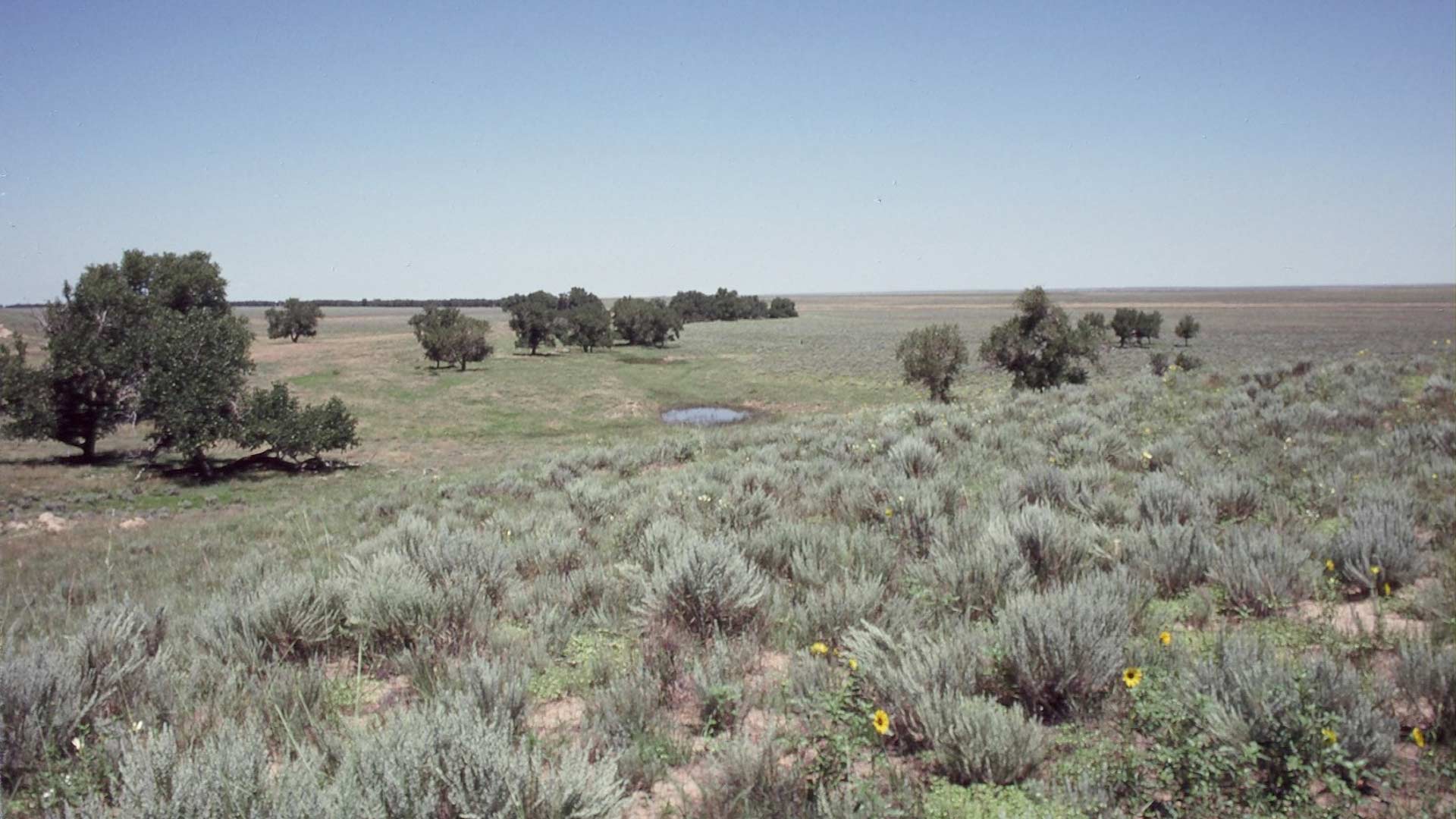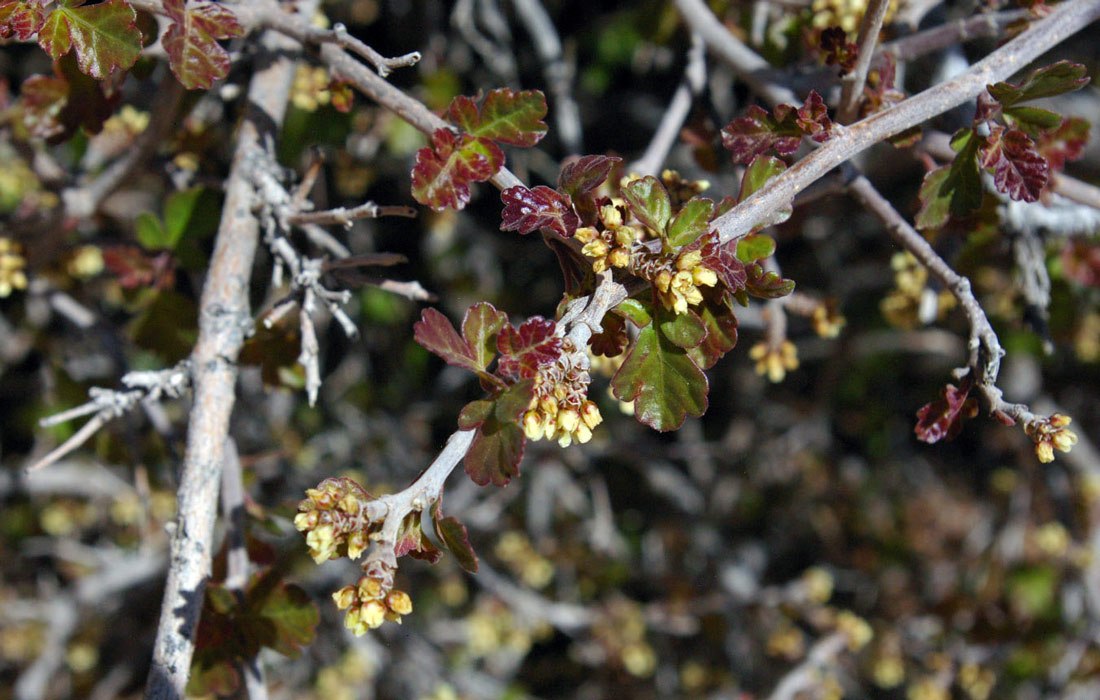Great Plains Sandhill Grasslands and Shrublands
Near Sand Creek Massacre Natl. Historic Site, Kiowa Co.
It is all too easy to take a cursory look at the rolling plains in the eastern one-third of Colorado and think that it is all the same. In the Plains Plants section of this website, we discussed the Plains Shortgrass Prairie ecosystem, which is the primary ecological plant community in this area. In that section, we drove northeast up I-76 toward Nebraska and then turned north on Route 50 to the Pawnee National grasslands.
But if you stay on I-76 and continue toward Fort Morgan, you will encounter a completely different ecosystem, the Sandhill Grasslands and Shrublands plant communities, with their own suite of native plants. The primary reason this change in ecosystem is because of a change in substrate. The soils of the shortgrass prairie are primarily composed of fine sandy loam, but as you approach the eastern boundary of Colorado with Nebraska and Kansas, you begin to encounter dune fields composed primarily of sand.
It is thought that these dune fields developed at the end of the last ice age when streams fed by the glaciers in the Rocky Mountains flowed east and overflowed their banks carrying sand and gravel and creating floodplains of sand. At the same time strong winds blowing from the ice fields piled the sand into dunes, which, over the centuries, gradually stabilized into the present vegetated sand hills.
Sandhill grasslands and shrublands extend far beyond the border of eastern Colorado into Nebraska, southwestern Kansas, western Oklahoma, with significant tracts in northeastern New Mexico and the Texas panhandle. In Colorado the largest tracts of shrublands are found in the South Platte Dune Field (2896 sq. mi.) and the Wray Dune Field (2896 sq. mi.) in northeast corner of the state, and the Black Squirrel Dune Field in east central Colorado (1379 sq. mi.).
The sandhill grasslands and shrublands are identified by the presence of a single indicator plant species, Sand sage (Artemisia filifolia). Sand sage is uniquely adapted to the environment in the sand dune fields in the eastern plains. Firstly it is both fire adapted and also adapted to grazing by bison (more recently, cattle). When disturbed by fire, sand sage is usually top-killed, but then quickly resprouts. Grazing by animals is similar to top-killing by fire, with the same result. When sand sage is occasionally killed completely by fire, research has shown that abundant seedlings sprout after the fire.
Sand sage is very drought resistant, able to survive with as little as 8” of rain annually. In addition this plant is able to grow in nutrient-poor soils because it has the ability to concentrate elements needed for growth in much higher levels than found in its substrate. It has a root system
Some Indicator Plants
Click on photo to see full-page lightbox image.
In lightbox, click on X in upper right corner to return here.
Photo by Jim Lochlear
which is perfectly adapted to sandy soil, where rain quickly seeps deep into the soil. Firstly, it has an extensively branched, 3 to 5 foot wide surface layer of roots that quickly absorb surface moisture. Then it has a tap root of up to 9 feet in length which taps into the water accumulating below.
An interesting and counter intuitive aspect of sandhill shrublandss is the presence of midgrass graminoid species, such as Sand Bluestem (Andropogon hallii) and Prairie Sandreed (Calamovilfa longifolia). The reason that these more mesic adapted grasses can survive in such a dry climate, is that moisture from rain quickly percolates into the sandy soil, avoiding run off and evaporation. The moisture is stored in the soil one to two inches below the surface and is readily available to these species.
James Locklear (1) in inventories of this plant community identified 119 species in 34 different families. The most prevalent families represented were, in order of rank, Grasses (Poaceae, 27 spp.), Asters (Asteraceae, 19 spp.), Peas (Fabaceae, 10 spp.), and Spurges (Euphorbiaceae, 6 spp.) and Evening Primroses (Onagraceae, 6 spp.)
In addition to the two mid-grass species named above, there is a mix of shorter grass and sedge species found in the shortgrass prairie such as Blue Grama (Bouteloua gracilis) and Hairy Grama (B. hirsuta) and Sun Sage (Carex inops ssp. heliophila) and Needle and Thread (Hesperostipa comata).
Some of the common asters in this area are Broom Snakeweed (Gutierrezia sarothrae), Rosey Palefox (Palafoxia sphacelata) and Sandhills Fleabane (Erigeron bellidiastrum).
In the pea family, Silky Prairie Clover (Dalea villosa), Rusty Lupine (Lupinus pusillus) and Lemon Scurf Pea (Psoralidium lanceolatum) are common on the eastern sandplains.
You will probably find Texas Croton (Croton texensis), Prairie Sandmat (Chamaesyce missurica) and Thymeleaf Sandmat (Chamaesyce serpyllifolia) in the spurge family, and Mountain Evening Primrose (Oenothera latifolia) and Yellow Sundrops (O. serrulata var. serrulata) in the Evening Primrose family.
Artemisia filifolia is not the only species of shrub that grows in this plant community. There are several others, notably, Great Plains Yucca (Yucca glauca), Skunkbrush Sumac (Rhus trilobata var trilobata), and occasionally Sand Cherry (Prunus pumila var. besseyi).
References
(1) James H. Locklear: SANDSAGE PRAIRIE: FLORISTICS, STRUCTURE, AND DYNAMICS OF A GREAT PLAINS PLANT COMMUNITY: https://journals.brit.org/jbrit/article/view/851/789
Wrangle World Rangeland Learning Experience – North American Short Grass Prairiehttps://wrangle.org/ecotype/north-american-short-grass-prairie
Roadside Geology of Colorado, Halka Chronic, Mountain Press Publishing Co., Missoula, Montana 1980
The Woody Artemisias: The Species and Their Propagation – Jim Borland
https://conps.org/wp-content/uploads/2021/05/Artemisia-part-3_entire.pdf

